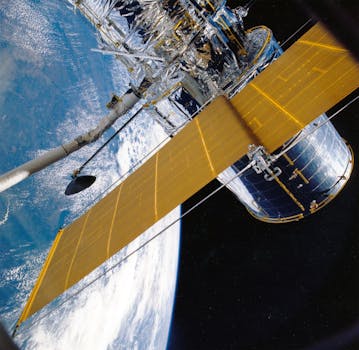
The Future of Satellites: Revolutionizing Global Connectivity
The future of satellites is set to revolutionize global connectivity, with advancements in space technology and the increasing demand for satellite-based services. The future of satellites is rapidly evolving, with new technologies and innovations being developed to meet the growing needs of the global community. In this article, we will explore the future of satellites and how they will shape the world of global connectivity.
Advancements in Space Technology
One of the key drivers of the future of satellites is the rapid advancement of space technology. With the development of new materials, propulsion systems, and communication technologies, satellites are becoming more efficient, cost-effective, and capable of providing a wide range of services. For example, the use of solar electric propulsion systems is allowing satellites to stay in orbit for longer periods of time, reducing the need for costly and complex fueling missions.
Another significant advancement in space technology is the development of small satellites, also known as CubeSats. These tiny satellites are smaller than a shoebox and weigh less than 3 pounds, but they are capable of providing a wide range of services, including Earth observation, communication, and navigation. The use of small satellites is making it possible for more organizations and countries to access space, which is driving innovation and reducing the cost of space-based services.
Increasing Demand for Satellite-Based Services
The demand for satellite-based services is increasing rapidly, driven by the growing need for global connectivity and the increasing use of satellite-based technologies. For example, the use of satellite-based navigation systems, such as GPS, is becoming more widespread, with many industries relying on these systems for navigation, tracking, and communication.
The use of satellite-based communication systems is also becoming more widespread, with many organizations and countries relying on these systems for communication, data transfer, and internet connectivity. The increasing demand for satellite-based services is driving the development of new technologies and innovations, including the use of high-throughput satellites, which are capable of providing faster and more reliable communication services.
Applications of Satellites in the Future
Satellites will play a critical role in the future of global connectivity, with a wide range of applications and uses. For example, satellites will be used to provide internet connectivity to remote and underserved communities, which will help to bridge the digital divide and provide access to information and opportunities.
Satellites will also be used to provide navigation and tracking services, which will be critical for industries such as aviation, maritime, and logistics. The use of satellite-based navigation systems will provide more accurate and reliable navigation, which will improve safety and efficiency.
Conclusion
In conclusion, the future of satellites is set to revolutionize global connectivity, with advancements in space technology and the increasing demand for satellite-based services. The use of satellites will provide a wide range of benefits, including improved communication, navigation, and internet connectivity. As the world becomes increasingly dependent on satellite-based services, it is essential to continue investing in the development of new technologies and innovations, which will drive the future of satellites and global connectivity.